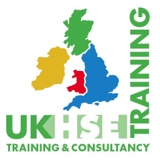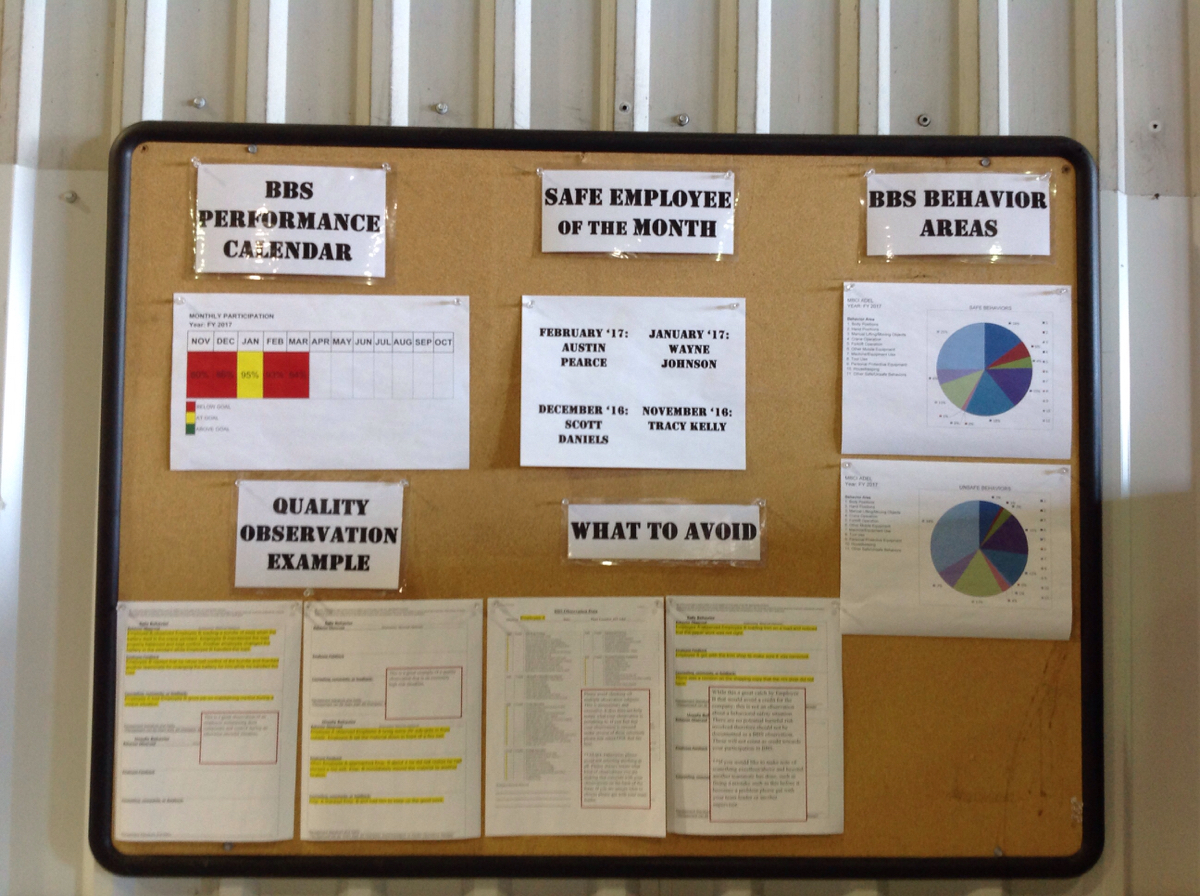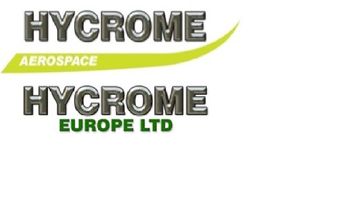General Information
-
Site conducted
-
Equipment
-
Equipment ID
-
Conducted on
-
Prepared by
-
Signature
-
Co-Auditor, if applicable
Applicable Standards
-
Select the appropriate standards that apply
- Unknown
- OSHA 29 CFR 1910.212 - General requirements for guarding all machines
- OSHA 29 CFR 1910.219 - Mechanical power-transmission apparatus
- ANSI B11.TR6 - Safety Control Systems for Machines
- ANSI B11.0 - Safety of Machinery - General Requirements - Risk Assessment
- ANSI B11.19 - Safeguarding Design, Construction, Installation, Operation, Maintenance
- ANSI / NFPA 79 - Electrical Standard for Industrial Machinery
- ANSI / PMMI B155.1 - Safety Requirements for Packaging Machinery and Packaging-Related Converting Machinery
- ANSI B11.1 - Mechanical Power Presses
- ANSI B11.2 - Hydraulic Power Presses
- ANSI B11.3 - Power Press Brakes
- ANSI B11.4 Shears
- ANSI B11.5 - Ironworkers
- ANSI B11.6 - Manual Turning Machines (lathes) with and without automatic controls
- ANSI B11.7 - Cold Headers and Cold Formers
- ANSI B11.8 - Manual Drilling, Milling and Boring Machines
- ANSI B11.9 - Grinding Machines
- ANSI B11.10 - Metal Sawing Machines
- ANSI B11.11 - Gear and Spline Cutting Machines
- ANSI B11.12 - Roll Forming and Roll Bending Machines
- ANSI B11.13 - Single and Multiple-Spindle Automatic Screw/Bar and Chucking Machines
- ANSI B11.14 - Coil Slitting Machines
- ANSI B11.15 - Pipe, Tube and Shape Bending Machines
- ANSI B11.16 - Powder / Metal Compacting Presses
- ANSI B11.17 - Horizontal Hydraulic Extrusion Presses
- ANSI B11.18 - Machines Processing of Coiled Strip, Sheet, and Plate
- ANSI B11.20 - Integrated Manufacturing Systems Cells
- ANSI B11.21 - Machine Tools using Lasers
- ANSI B11.22 - CNC Turning Machines
- ANSI B11.23 - CNC Milling, Drilling and Boring Machines
- ANSI B11.24 - Transfer Machines
- ANSI B11.TR1 - Ergonomic Guidelines
- ANSI B11.TR2 - Mist Control
- ANSI B11.TR3 - Risk Assessment / Risk Reduction
- ANSI B11.TR4 - Programmable Electronic System (also see NFPA-79 for additional information)
- ANSI B11.TR5 - Sound Level Measurement
- ANSI B11.TR7 - Design for Lean Manufacturing
- ANSI 01.1 - Woodworking Machinery
- ANSI / RIA R15.06 - Industrial Robots and Robot Systems
- ANSI / NFPA 70 - National Electrical Code
- ASME B20.1 - Safety Standards for Conveyors
- OSHA 29 CFR 1910 - General Industry Regulations
- OSHA 29 CFR 1910.211 - Definitions
- OSHA 29 CFR 1910.213 - Woodworking machinery requirements
- OSHA 29 CFR 1910.215 - Abrasive wheel machinery
- OSHA 29 CFR 1910.217 - Mechanical power presses
- OSHA 29 CFR 1910.218 - Forging Machines
- OSHA 29 CFR 1910.333 - Electrical Safety
- OSHA 29 CFR 1926.300 - General requirements
- OSHA 29 CFR 1926.301 - Hand tools
- OSHA 29 CFR 1926.302 - Power-operated hand tools
- OSHA 29 CFR 1926.303 - Abrasive wheels and tools
- OSHA 29 CFR 1926.304 - Woodworking tools
- OSHA 29 CFR 1926.307 - Mechanical power-transmission apparatus
- OSHA 29 CFR 1926.555 - Conveyors
- OSHA 1910 Subpart D - Walking-Working Surfaces
- OSHA 1910 Subpart O - Machinery and Machine Guarding
- OSHA 1910 Subpart P - Hand and Portable Tools
- OSHA 1910 Subpart S - Electrical
- OSHA 1910.6 - Incorporation by Reference - Includes all ANSI, NFPA Standards
- OSHA 1910.24 - Fixed Industrial Stairs
- OSHA 1910.27 - Fixed Ladders
- OSHA 1910.147 - Control of Hazardous Energy (LOTO)
- SEMI S10-0215 - Safety Guidelines for Risk Assessment and Risk Evaluation Process
Media
-
Photos and Videos of Equipment
Safety Assessment
Machine Guarding
-
Mechanical Hazards - Point of Operation (OSHA 1910.212)
-
Are all safeguards fixed in place with secure fasteners, with no evidence of tampering, removal or bypassing?
-
Do the safeguards permit comfortable and relatively easy operation of the machine, with good visibility (unlikely to bypass), with the ability to oil the machine without removing guards?
-
As tested with a safety scale, does the point-of-operation safeguard prevent access by the operator's body, hands, and fingers to all hazards?
Machine Guarding
-
Power Transmission Apparatus (OSHA Basics and OSHA 1910.219)
-
As tested with a safety scale, do the safeguards prevent contact with the point of operation, ingoing nip points, rotating parts, flying chips/sparks, with no unguarded gears, sprockets, pulleys, flywheels, exposed belts, chain drives, set screws, key ways, collars, sharp objects (including guards), and other hazards?
-
Are safeguards provided for all hazardous motion of the machine including auxiliary parts?
-
Are start, stop and Emergency stop controls within easy reach of the operator with the E-stops unguarded and colored red with a yellow background?
Control Reliability (ANSI B11.19 / NFPA 79)
-
Are all hinged, adjustable, or removable guards interlocked with a safety switch?
-
Are all safety switches and devices approved for safety (rated PLd or PLe)?
-
Are all relays and contactors in the safety circuit force guided?
-
Is hazardous motion stopped by redundant switching elements such as redundant force guided relays/contactors, safety rated valves, or safety rated drives?
-
Are these final switching elements monitored to detect failures otherwise?
-
Does the functional safety performance (PL) of the safety systems meet or exceed the estimated functional safety performance requirements (PLr)?
-
Is the stopping performance adequate?
Non-mechanical Hazards
-
Are admin. controls in place to safeguard workers from noise exposure exceeding 85 dBA?
-
Have guards or insulation been provided to prevent access to surface temps. > 140 degrees F?
-
Is the machine grounded in accordance with National Electrical Code (NFPA 70) requirements with no electrical hazards observed?
Hazardous Energy Control (Partial Checklist (OSHA 1910.147)
-
Do machine specific procedures exist for shutting down, isolating, securing and verifying each energy source located on the machine?
-
For this machine, are all energy-isolating devices accessible and capable of being operated in a manner that isolates the machine or equipment from the energy source(s)?
-
Is the hazardous energy isolation device capable of accepting a padlock (tagout only is not acceptable)?
Observed Hazards WITH Existing Protection
-
Observed Hazards WITH Existing Protection (Select ALL that apply)
- None
- Not available for inspection
- Biological / Health - Allergens
- Biological / Health - Bacteria (e.g. E. Coli, Listeriosis)
- Biological / Health - Bloodborne Pathogens
- Biological / Health - Mold
- Biological / Health - Viral
- Chemical, Material or Substance Hazards - Chemical Emissions / Splash
- Chemical, Material or Substance Hazards - Acute Health Affects (e.g. Ammonia)
- Chemical, Material or Substance Hazards - Chronic Health Affects
- Chemical, Material or Substance Hazards - Delayed Effects of Chemical Exposure
- Chemical, Material or Substance Hazards - Found In or Used By the Machine (e.g. Mercury, Alcohol)
- Chemical, Material, or Substance Hazards - Generated By the Machine (e.g. Emissions, Radiation, Mist)
- Chemical, Material, or Substance Hazards - Handled by the Machine (e.g. Flammable, Toxic, Flour Dust)
- Chemical, Material or Substance Hazards - Metal Removal Fluids
- Chemical, Material or Substance Hazards - Mixing Incompatible Chemicals
- Container Breakage or Product Spillage - Container Breakage
- Control Systems - Dropping or Ejection of a Mobile Part of the Machine or of a Workpiece Clamped by the Machine
- Control Systems - Failure to Stop Moving Parts
- Control Systems - Machine Action Resulting From Defeating or Failure of Safeguarding Devices
- Control Systems - Uncontrolled Speed Change
- Control Systems - Unintended / Unexpected Start-Up
- Electrical / Electronic Hazards - Arc Flash Hazard
- Electrical / Electronic Hazards - Direct Contact with Normally Energized Machines
- Electrical / Electronic Hazards - Electrical Noise
- Electrical / Electronic Hazards - Electrostatic Discharge
- Electrical / Electronic Hazards - Improper Wiring / Grounding
- Electrical / Electronic Hazards - Inadvertent Contact
- Electrical / Electronic Hazards - Insulation Failure (e.g. from Vibration or Thermal Cycling)
- Electrical / Electronic Hazards - Jumpered Switches
- Electrical / Electronic Hazards - Liquid / Wet Locations
- Electrical / Electronic Hazards - Overvoltage / Overcurrent
- Electrical / Electronic Hazards - Parts Live from Fault Condition (Indirect Contact)
- Electrical / Electronic Hazards - Shorts / Arcing / Sparking
- Electrical / Electronic Hazards - Software Errors
- Electrical / Electronic Hazards - Under Voltage (e.g. Unpredictable Machine Operations)
- Environmental - Asphyxiants
- Environmental - Carcinogens
- Environmental - Corrosion
- Environmental - Corrosives
- Environmental - Emissions
- Environmental - Hazardous Waste / Byproducts
- Environmental - Ozone Depleting Substances
- Environmental - Poisons
- Environmental - Solvents
- Environmental - Trace Metals
- Ergonomic / Human Factors - Controls Difficult to Read / Understand / Operate (e.g. Foreign Language, Up-Side-Down, etc.)
- Ergonomics / Human Factors - Excessive Reach, Bending, Crouching or Stooping
- Ergonomics / Human Factors - Language / Cultural Difficulties (e.g. translations, communication)
- Ergonomics / Human Factors - Lifting / Bending / Twisting (e.g. Dynamic Movements to Do Work, Excessive Exertion)
- Ergonomics / Human Factors - Poor Access / Clearance
- Ergonomics / Human Factors - Repetition / Personal Fatigue
- Ergonomics / Personal Factors - Static Posture (e.g. Static Standing Positions, Awkward to Get to)
- Ergonomics / Human Factors - Vibration (Whole Body or Hand / Arm)
- Fire and Explosion - Combustible Metals
- Fire and Explosion - Dust
- Fire and Explosion - Electrical Arcs
- Fire and Explosion - Explosion / Implosion
- Fire and Explosion - Flames
- Fire and Explosion - Flammable Vapors / Gas
- Fire and Explosion - Hot Surfaces
- Fire and Explosion - Improperly Designed Electrical / Electronic Systems
- Fire and Explosion - Smoke
- Fire and Explosion - Sparks
- Fire and Explosion - Spontaneous Combustion
- Fire and Explosion - Static Electricity
- Fluids - Absorption
- Fluids - Degradation of Materials Due to Contact with Fluids
- Fluids - Fluid Injection (Pneumatic or Hydraulic)
- Fluids - Liquid / Vapor Hazards
- Fluids - Pneumatics
- Fluid - Rupture / Leakage
- Fluids - Surges / Sloshing
- Glue Systems - Cleaning of the Glue System
- Glue Systems - Filling the Glue System
- Glue Systems - Hot Melt Glue
- Glue Systems - Lgac'S
- Handling of Container, Product or Material - Handling of Container
- Handling of Container, Product or Material - Handling of Product and/or Material
- Heat / Temperature / Thermal - Burns / Scalds
- Heat / Temperature / Thermal - Cold Material / Severe Cold
- Heat / Temperature / Thermal - Cold Work Environment
- Heat / Temperature / Thermal - Hot Material / Severe Heat
- Heat / Temperature / Thermal - Hot Work Environment
- Heat / Temperature / Thermal - Refrigeration
- Lasers - Eye Exposure
- Lasers - Laser Generated Air Contaminants (Lgac)
- Lasers - UV Skin Exposure
- Material Handling - High Speed Operations
- Material Handling - Lifting / Moving Equipment
- Material Handling - Robot Movement
- Material Handling - Unknown Center of Gravity
- Material Handling - Unknown Weight
- Material Handling - Unstable Stacking / Storage
- Mechanical Hazards - Broken or Falling Machine Components or Release of Mechanical Energy
- Mechanical Hazards - Component Fatigue / Wear
- Mechanical Hazards - Crushing / Impact
- Mechanical Hazards - Cutting / Severing
- Mechanical Hazards - Entanglement
- Mechanical Hazards - Friction / Abrasion
- Mechanical Hazards - Head Bump
- Mechanical Hazards - In-Running Nip Points
- Mechanical Hazards - Intermittent / On Demand Cycle (A Machine that Cycles Automatically)
- Mechanical Hazards - Machine Instability
- Mechanical Hazards - Magnetic Attraction / Movement
- Mechanical Hazards - Pinch Points
- Mechanical Hazards - Stabbing / Puncture
- Mechanical Hazards - Stored Energy
- Natural Hazards / Environment of Use - Humidity
- Natural Hazards / Environment of Use - Loss of Power / Control / Lighting
- Natural Hazards / Environment of Use - Moving / Overturning Equipment
- Natural Hazards / Environment of Use - Seismic Events of Lightning
- Noise - Continuous or Intermittent
- Noise - Instantaneous / Impulse Noise Level
- Noise - Interference with Communication and/or Awareness Devices
- Noise - Noise Level Over 8 Hour Work Day
- Radiation - Infared Radiation
- Radiation - Interference from other Equipment (e.g. Cardiac Pacemaker, Magnetizable Prostheses)
- Radiation - Non-Ionizing
- Radiation - Other Uncontrolled Ionizing Particles
- Radiation - Radio Frequency / Microwave Energy
- Radiation - UV
- Radiation - Uncontained X-Rays
- Radiation - Visible Light
- Radiation - Alpha, Beta Rays, Electron or Ion Beams, Neutrons
- Slips / Trips / Falls / Egress - Debris
- Slips / Trips / Falls / Egress - Fall Hazard from Elevated Work
- Slips / Trips / Falls / Egress - Floor / Wall Openings
- Slips / Trips / Falls / Egress - Poor Lighting
- Slips / Trips / Falls / Egress - Slippery Surface
- Ventilation / Confined Space - Inadequate Ventilation
- Ventilation / Confined Space -Inadequate Oxygen Level (Depleted or Enriched)
- Ventilation / Confined Space - Wrong Airflow Direction (e.g. Back Drafts, Under pressure, Recirculation Air)
Observed Risk Reduction Methods (Safeguards)
-
Observed Risk Reduction Methods (Safeguards) (Select ALL that apply)
- None
- Not available for inspection
- Guards - Adjustable
- Guards - Fixed
- Guards - Interlocked (With or Without Locking Mechanism)
- Guards - Moveable
- Guards - Partial
- Awareness Devices - Awareness (Safety) Signs
- Awareness Devices - Barriers
- Awareness Devices - Signals
- Complementary Equipment and Measures - Emergency Stop Device (Pal / Push Buttons or Rope / Cable Pulls)
- Complementary Equipment and Measures - Enabling Devices
- Complementary Equipment and Measures - Hand Tools
- Complementary Equipment and Measures - Hold-To-Run Controls
- Complementary Equipment and Measures - Measures for Safe Access to Machinery
- Complementary Equipment and Measures - Measures for the Escape and Rescue of Trapped Persons
- Complementary Equipment and Measures - Process Malfunction, Detection and Monitoring Equipment
- Complementary Equipment and Measures - Provisions for Easy and Safe Handling of Machines and Their Heavy Component Parts
- Complementary Equipment and Measures - Safety Blocks, Locking Pins, Limiting / Blocking Pins
- Complementary Equipment and Measures - Safety Interface (Safety Relay) Modules
- Complementary Equipment and Measures - Safety Pes / Plc, Safety Controllers (including the Safety-Bus Systems)
- Complementary Equipment and Measures - Shields
- Complementary Equipment and Measures - Slide Locks
- Complementary Equipment and Measures - Stopping Performance Monitor
- Complementary Equipment and Measures - Workholding Equipment
- Information for Use - Instructions / Manuals
- Information for Use - Signage / Awareness Means
- Organizational - Permit to Work Systems
- Organizational - Safe Work Procedures
- Organizational - Supervision
- Personal Protective Equipment
- Safeguarding Devices - Area Scanning Presence-Sensing Safeguarding Devices
- Safeguarding Devices - Electro-Optical Presence-Sensing Safeguarding Devices
- Safeguarding Devices - Movable Barrier Devices
- Safeguarding Devices - Pull Back (Pull Out) and Restraint Devices
- Safeguarding Devices - RF Presence - Sensing
- Safeguarding Devices - Safety Edge Devices
- Safeguarding Devices - Safety Light Curtains (Screens) and Safety Single/Multiple Beam Devices
- Safeguarding Devices - Safety Mat Devices
- Safeguarding Devices - Single Control Safeguarding Devices
- Safeguarding Devices - Two-Hand Operating Device
- Safeguarding Devices - Safe Distance Safeguarding
- Safeguarding Devices - Safe Holding Safeguarding
- Safeguarding Devices - Safe Location Safeguarding
- Safeguarding Devices - Safe Opening Safeguarding
- Documented Training
Additional Observations
-
Additional Observations
Affected Persons
-
Affected Persons (Select ALL that apply)
- Operators
- Maintenance
- Visitors
- Contractors
- Other
Risk Assessment
-
Injury Severity, Exposure and Avoidance Categories - Use for the 6 questions below
-
INJURY SEVERITY Selection WITHOUT Existing Safeguarding
-
INJURY SEVERITY Selection WITH Existing Safeguarding
-
EXPOSURE Selection WITHOUT Existing Safeguarding
-
EXPOSURE Selection WITH Existing Safeguarding
-
AVOIDANCE Selection WITHOUT Existing Safeguarding
-
AVOIDANCE Selection WITH Existing Safeguarding
-
Calculation Lookup - WITHOUT Existing Safeguarding (i.e. S1, E1, A1)
-
Calculation Lookup - WITH Existing Safeguarding (i.e. S1, E1, A1)
-
Risk Level Decision Matrix - Use for the question below
-
Risk Level Based on Risk Level Decision Matrix (Use Calculation from WITH Existing Safeguarding)
Actions / Methods Needed to Reduce Risk
-
Actions / Methods Needed to Reduce Risk (Select ALL that apply)
- None
- Add yellow background to red E-Stop button(s)
- Add / repair guarding as needed to prevent ANSI scale reach
- Light curtain safety distance is not adequate. Increase safety distance or improve stopping time of the machine
- Make all safety circuits control reliable. This requires dual channel circuits with monitoring / feedback and approved safety components (safety relays, safety interlock switches, etc.)
- Verify that control reliable circuitry is present for all safety functions
- Add or update existing two-hand control and control reliable circuitry in accordance with ANSI B11.19
- Secure safety mat to the floor
- Add / update work procedures to require visual check by operator before restarting motion
- Add reset / restart action required before hazardous motion resumes
- Team Based Risk Assessment (TBRA) per ANSI B11.0 is recommended
- Perform Lockout/Tagout (LOTO) audit in this area
- Add or improve documented personnel training
- Remove safety bypasses
-
Corrective Actions / Comments
Achievement of Acceptable Risk
-
Acceptable risk is a designation assigned to an estimated risk by the risk assessor that indicates that adequate risk reduction has been applied at that point in the lifecycle of the machine. Risk acceptance is based on a state of knowledge about the severity and probability of a dangerous outcome. Acceptable risk is not a universal characteristic. The same hazard / exposure may be judged acceptable by some and not acceptable by others. An estimated risk that is high, medium, or low may be judged acceptable at any of these levels. Non-assessed risks cannot be classified as acceptable risks. To achieve acceptable risk, appropriate standards need to be met. Additional risk reduction measures not in the standards may also be necessary. (ANSI B11.0 Annex G)












